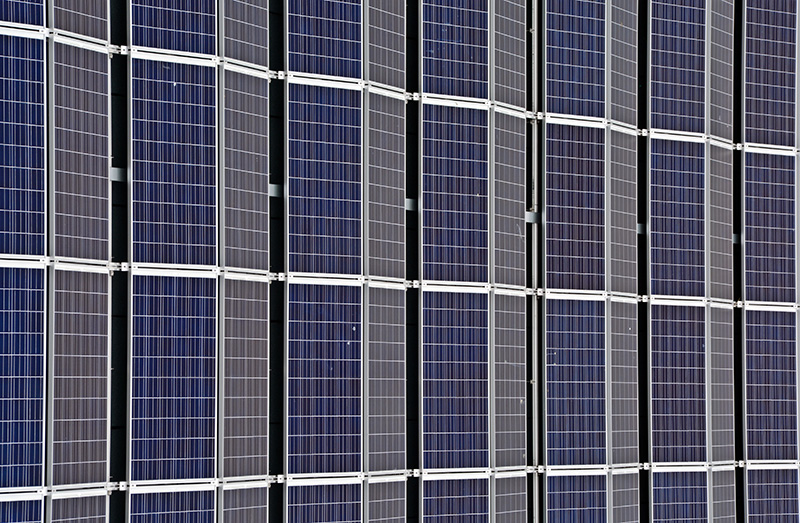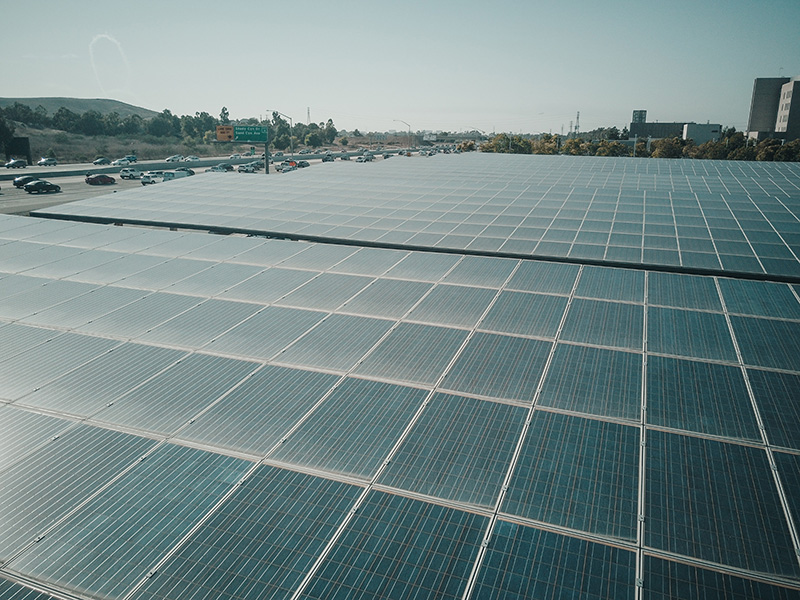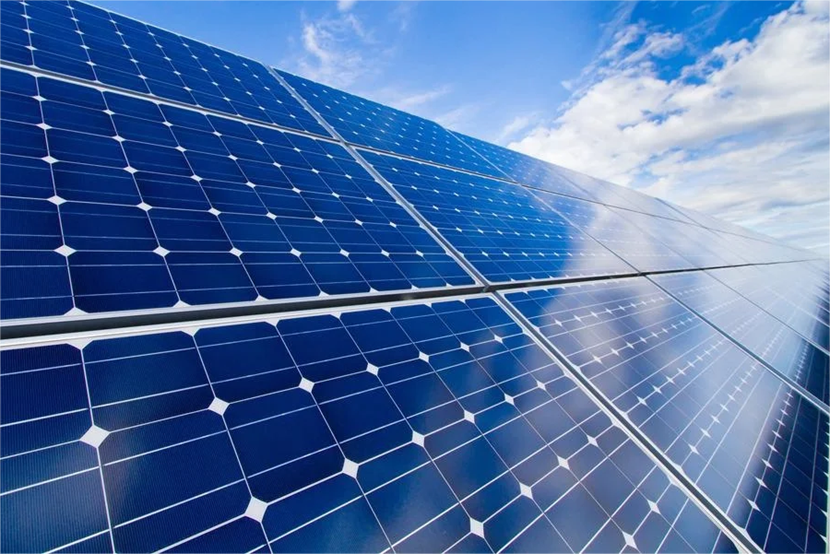Description
The best type of solar panel depends on individual needs, location, budget, and installation conditions. Monocrystalline solar panels offer high efficiency and power output, making them suitable for areas with limited space. Polycrystalline panels are typically more affordable but slightly less efficient. Thin-film panels are versatile and lightweight but have a lower efficiency. Concentrated PV cells are extremely efficient in sunny conditions but are more complex and costly. Ultimately, the best choice varies based on specific requirements and constraints.
Types of Solar Panels
Solar panels have been the cornerstone of renewable energy production. Their efficiency, adaptability, and decreasing cost have made them a favorite for both residential and commercial applications. There are various types of solar panels available in the market, each with its unique features and benefits.
Monocrystalline Solar Panels
Monocrystalline solar panels are made from a single crystal structure. They are known for their uniform dark look and rounded edges.
- Efficiency:Among the highest of all solar panels, often above 20%.
- Longevity:They tend to last long and come with warranties that can extend up to 25 years.
- Cost:Typically more expensive than polycrystalline panels.
- Appearance:Sleek and uniform, often preferred for residential installations due to their aesthetics.
Polycrystalline Solar Panels
Polycrystalline panels are made from multiple crystal structures. They have a blue hue due to the way light interacts with the silicon.
- Efficiency:Slightly less efficient than monocrystalline, typically around 15-17%.
- Longevity:Comparable lifespan to monocrystalline panels.
- Cost:Generally less expensive than monocrystalline.
- Appearance:Less uniform with a distinct blueish hue.
Thin-Film Solar Panels
Thin-film panels are made by placing one or more films of photovoltaic material on a substrate.
- Efficiency:Lower than mono and polycrystalline panels, usually around 10-12%.
- Longevity:Shorter lifespan, typically around 10-15 years.
- Cost:Often cheaper but requires more space to produce the same amount of electricity.
- Flexibility:Can be made flexible, opening up new installation possibilities.
Concentrated PV Cell (CVP)
CVPs are similar to traditional PV cells but use lenses or mirrors to focus sunlight onto a small area of high-efficiency solar cells.
- Efficiency:Extremely high, often above 40% in some cases.
- Application:Best suited for areas with a lot of direct sunlight.
- Design:Requires a cooling system and solar trackers to keep the sun's focus on the cell.
Biohybrid Solar Panels
Biohybrid solar panels combine organic materials and photovoltaic materials to capture and convert sunlight into energy.
- Efficiency:Still under research, but shows potential.
- Innovation:Combines the principles of photosynthesis and PV technology.
- Eco-Friendly:Often made with more sustainable materials than traditional panels.
Comparison of Solar Panel Technologies
Choosing the right solar panel technology depends on various factors, including location, budget, space availability, and desired efficiency. By comparing the various technologies, we can determine which type is most suitable for specific applications.
Efficiency Rates
The efficiency of a solar panel refers to the percentage of sunlight hitting the surface of the panel that is converted into electricity.
- Monocrystalline Panels: Often above 20%. They're one of the most efficient panels available.
- Polycrystalline Panels: Ranges between 15-17%. They're slightly less efficient compared to monocrystalline panels.
- Thin-Film Panels: Typically around 10-12%. Their efficiency is lower, but they offer other advantages such as flexibility.
- Concentrated PV Cell (CVP): Extremely high, sometimes exceeding 40%. Best suited for areas with consistent, direct sunlight.
Longevity and Durability
Longevity refers to
how long a solar panel lasts, while durability refers to its resistance to environmental factors.
- Monocrystalline and Polycrystalline Panels: They can last up to 25 years or more with minimal degradation.
- Thin-Film Panels: Have a shorter lifespan, often around 10-15 years.
- CVP: While efficient, they require more maintenance, impacting their longevity.
Cost Comparisons
The cost of solar panels has decreased over the years, but there are still differences based on the technology.
- Monocrystalline Panels: Generally more expensive due to their higher efficiency and longevity.
- Polycrystalline Panels: Often cheaper than monocrystalline panels.
- Thin-Film Panels: Typically the cheapest but may require more panels for the same output.
- CVP: Can be expensive due to the technology involved and the additional equipment required.
Space Efficiency
Space efficiency refers to the amount of energy a panel can produce relative to its size.
- Monocrystalline Panels: Highly space-efficient due to their high efficiency.
- Polycrystalline Panels: Less space-efficient compared to monocrystalline.
- Thin-Film Panels: Require more space to produce the same amount of energy as crystalline panels.
- CVP: Highly space-efficient, especially in areas with consistent sunlight.
Environmental Impact
Solar panels are often lauded for their green credentials, but like all manufactured products, they come with an environmental footprint. Assessing this footprint can give us a clearer understanding of the broader implications of solar energy on our environment. Let's dive into the environmental impact of solar panels, examining their carbon footprint, waste generation and recycling processes, and their resource consumption.
Carbon Footprint
Solar panels have significantly lower carbon emissions compared to fossil fuel sources. However, emissions arise mainly from the production and transportation of the panels. Monocrystalline and polycrystalline panels, for instance, require significant energy, mostly sourced from non-renewable sources, in the manufacturing process. Conversely, thin-film panels and biohybrid panels often have a lower carbon footprint during production. It's essential to weigh these initial carbon costs against the panel's lifespan, as a longer-lived panel can offset more emissions over time. To get a holistic view, one must consider the carbon footprint from cradle (manufacturing) to grave (disposal).
As solar panels reach the end of their lifecycle, they contribute to electronic waste. Traditional recycling methods can recover up to 95% of the glass and 85% of the semiconductor materials, but some rare elements in specific panels are harder to reclaim. The industry is striving towards creating panels that are fully recyclable and designing processes to retrieve even the rarest of elements used in panels. It's essential for policy frameworks to encourage the recycling of panels to reduce waste.
Resource Consumption
Solar panel production requires various resources, including silicon for monocrystalline and polycrystalline panels, cadmium for some thin-film panels, and rare metals like tellurium and indium. While these materials enable the efficient conversion of sunlight to electricity, their extraction can have environmental implications, especially if not managed sustainably. Moreover, the demand for these materials can strain supplies and affect global markets. Innovations are focusing on reducing the quantity of rare materials required or finding sustainable alternatives.
Installation and Maintenance
Solar panels are increasingly becoming a popular energy choice for many due to their long-term benefits, both environmentally and economically. However, the initial setup, ongoing maintenance, and the potential to upgrade or expand a system are essential factors to consider before making an investment.
Initial Setup and Installation Complexity
The initial setup for solar panels is critical, as it can significantly impact the system's overall efficiency. Monocrystalline and polycrystalline panels, due to their rigid structure, often require sturdy mounting structures and precise orientation to maximize sunlight capture. Thin-film panels, being more flexible, offer diverse
installation opportunities, including integration into building materials or curved surfaces. CVP systems require specialized installations due to the need for concentrators and tracking systems to maintain optimal sunlight focus.
| Type |
Installation Complexity |
Typical Installation Time |
| Monocrystalline |
Moderate |
1-3 days for residential |
| Polycrystalline |
Moderate |
1-3 days for residential |
| Thin-Film |
Low to Moderate |
1-2 days for residential |
| Concentrated PV (CVP) |
High |
3-5 days for residential |
Maintenance Requirements and Costs
Once installed, solar panels require minimal
maintenance. However, it's essential to ensure they're clean and free from obstructions like dirt or snow, which can reduce efficiency. Monocrystalline and polycrystalline panels have similar maintenance needs, typically involving cleaning a couple of times a year. Thin-film panels might need more frequent checks due to their less robust nature, while CVP systems, with their moving parts and concentrators, demand more regular maintenance checks.
The average maintenance cost for a residential solar setup might range between $150 to $350 annually, depending on the system and location.
Upgradability and Expandability
Solar systems are modular, allowing homeowners and businesses to expand their installations as their needs grow or as budget permits. Monocrystalline and polycrystalline panels are particularly suitable for expansion, with newer panels easily integrating into existing systems. Thin-film panels, due to their diverse installation methods, might present more challenges when upgrading. On the other hand, CVP systems, given their specialized nature, might have limitations on upgradability without a significant overhaul.
Integration with Other Renewable Sources
Harnessing solar energy doesn't mean excluding other renewable sources. Instead, integrating solar power with other renewable energies can lead to more reliable, efficient, and sustainable energy solutions. By combining the strengths of different energy sources, we can mitigate the limitations of relying on one.
Solar-Wind Hybrid Systems
Solar-wind hybrid systems combine the strengths of both solar panels and wind turbines. On days when the sun isn't shining as brightly, wind turbines can often pick up the slack, especially in areas where windy conditions are prevalent during cloudy days. Such hybrid systems offer more consistent energy production, reducing reliance on battery storage or backup generators.
There are two primary methods of integration:
- Parallel Integration: Both solar and wind systems generate power simultaneously, feeding electricity into the grid or a shared storage system.
- Series Integration: Depending on conditions, either the solar or wind system is prioritized, with the secondary system activating when the primary source isn't generating sufficient power.
Benefits of this integrated approach include reduced grid reliance, better land utilization, and potential cost savings in shared infrastructure like inverters and transmission lines.
Solar-Hydrogen Systems
Solar-hydrogen systems utilize solar energy to produce hydrogen through a process called electrolysis. When sunlight hits solar panels, the generated electricity powers an electrolyzer, which splits water into hydrogen and oxygen. This hydrogen can then be stored and used in various applications, from fuel cells to conventional hydrogen combustion.
The primary advantages of this integration are:
- Storage: Hydrogen serves as a form of energy storage, making solar power accessible even during nighttime or cloudy days.
- Versatility: Hydrogen, as a clean fuel, can be used in transportation, heating, and power generation.
- Emissions Reduction: Hydrogen combustion releases only water vapor, ensuring a clean energy cycle when combined with solar power.
It's important to note that the efficiency of electrolysis and hydrogen storage methods can affect the overall system efficiency, but advancements in technology are continuously improving these figures.
Success Stories and Challenges
Harnessing the power of the sun through solar installations has witnessed numerous success stories, from humble residential setups to massive solar farms and innovative off-grid systems. As with all technologies, solar energy has faced its fair share of challenges, but its rapid growth and adaptation globally are a testament to its viability and potential.
Residential Installations
Homeowners globally are increasingly seeing the value of integrating solar panels into their households. Not only does it provide a sustainable energy source, but it also offers financial incentives, such as reduced electricity bills and tax credits in many regions. Brands like
Tongwei have played a role in offering efficient and affordable solar solutions for residential use. However, challenges include the initial cost of installation, navigating local regulations and zoning laws, and ensuring optimal orientation and positioning for maximum sunlight capture.
Large-scale Solar Farms
Solar farms represent the grand scale of what solar energy can achieve. Sprawling over acres, these installations can generate power equivalent to traditional power plants. Countries like China, the US, and India have invested heavily in solar farms, with companies including
Tongwei being instrumental in providing materials and technology. Yet, the success of these farms isn't without challenges. Land acquisition, potential environmental impact, and integrating the generated power into national grids can pose significant hurdles.
Off-grid Solar Systems
In remote areas where extending the national grid is impractical, off-grid solar systems have been transformative. These stand-alone systems provide essential electricity to regions previously dependent on non-renewable, polluting sources.
Tongwei and other brands offer solutions tailored for these applications. The challenges often lie in ensuring robust battery storage, managing system maintenance in remote locations, and educating locals about the operation and upkeep of these installations.



